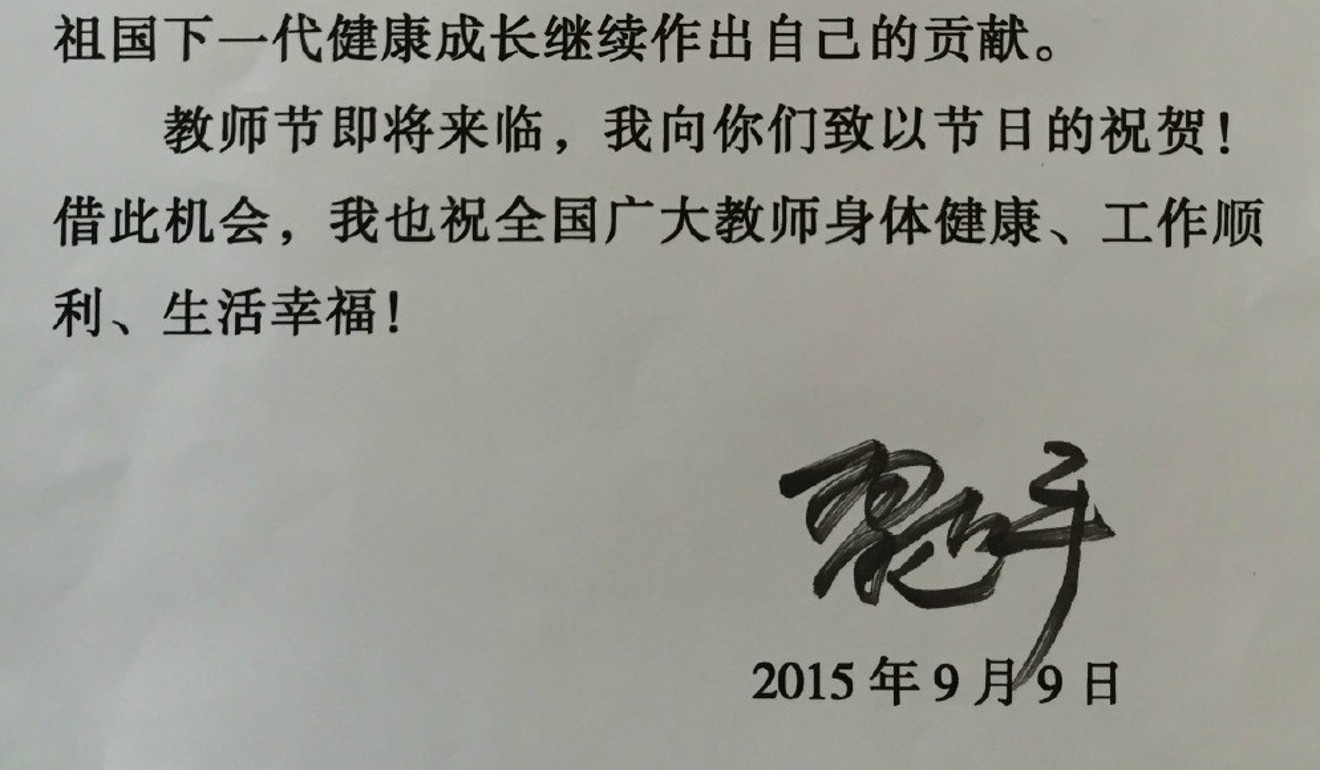
Red-letter days: top tips for getting a written response from a Chinese leader
Xinhua offers some advice for anybody hoping to get one of the rare replies from the president
Thousands of people write to President Xi Jinping each week but young people and favoured industry groups have a higher chance of being among the handful each year who receive a reply, according to Chinese media reports.
According to the Southern Metropolis News, about 2,000 letters from the public are sent to Chinese leaders via the State Bureau for Letters and Visits each day, with about two-thirds addressed directly either to the president or Premier Li Keqiang.
But Xi has replied to just 20 of those letters since 2013, including just two last year, according to Communist Party website Cpcnews.cn.
The presidential replies have been a window on the priorities of the state leader since the days of Mao Zedong.

On its WeChat account on Friday, Xinhua offered would-be letter writers some top tips to improve their chances of a getting a personal answer.
First, it helps to be a youth group or a young person.
Xi’s most recent letter was to a group of 100 Chinese university students touring historic party sites and taking part in poverty alleviation projects on the mainland.
“I feel very happy that your thoughts have been purified on the tour and you have achieved positive results in helping people in poverty,” CCTV quoted Xi as saying in the letter on Tuesday.

Xinhua also recommended linking the letter to a key date such as Labour Day or the anniversary of the People’s Liberation Army, prime opportunities for the president to send a message to the nation.
Industries or groups related to a pressing policy concern also have a better chance, according to the report.
For example, in 2014 Xi replied to a letter from 30 Chinese entrepreneurs to show the state’s concern for business development.
In addition, anybody putting pen to paper need only put the leader’s name and title on the envelope – no address is necessary.
All letters sent to the leadership go to a post office in Zhongnanhai, the party and State Council’s headquarters in the capital.
As rare as the replies may be, each one from Xi will be two to three paragraphs long and include a reference to “the Chinese dream”, according to the Shanghai Observer.
In the United States, former president Barack Obama reportedly read 10 of the more than 40,000 letters sent to the White House each day of his time in office.
Those letters were selected by hundreds of interns, volunteers and staff, according to The New York Times.
In Britain, one of Queen Elizabeth’s more notable replies was to a British man who mailed her a birthday card along with £50 to buy some tea for her 90th birthday last year. The queen returned the money with a letter from her secretary saying she was most touched by the gift.

